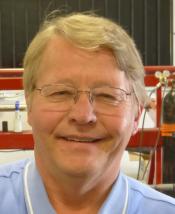Björn N.P. Paulsson, Ph.D.
*Ph.D. in Seismology and Rock Mechanics from UC Berkeley 1983
o Performed the industry first time lapse tomographic monitoring survey of a fractured rock mass 1978 – 1980
o Published more than 50 papers in borehole seismology
o Holds eight patents and two patent applications
*Worked for Chevron Oil Field Research Company for 13 year
o Did a tomographic survey to map oil saturation in Kern River Oil Field 1985
o Invented and designed the borehole seismic vibroseis tool
o Received the Chevron Chairman’s award for instrument inventions
*Paulsson Geophysical & Paulsson, Inc.
o Started and operated two companies specializing in borehole seismology
o Invented and designed the industry’s first large borehole seismic array 1998
o Invented and designed a fiber optic seismic vector sensor
*SEG
o Organized the first SEG Development and Production Forum 1991
o SEG Development of Production Committee Chairman 1992 – 1994
o Co- Chairman of the first SPE/SEG joint pilot forum, 1996
o Chairman of the eighth SEG D&P and second SEG/SPE pilot Forum, 1998
*SPE
o SPE Distinguished Lecturer 1992-1993
Presentation Summary:
An effective production of geothermal energy is critically dependent on a precise understanding of the complexity of the geologic formations prior to the development of the geothermal reservoirs. A successful production also depends on an accurate monitoring program to understand the dynamic processes of the injection of fluids and of producing the geothermal resources. The complex production processes of the geothermal fields will only be understood and managed in detail if new robust high-resolution reservoir imaging and monitoring technologies are available to characterize the reservoirs in the early phases of the field development.
Seismic techniques are the dominant geophysical techniques for the characterization of subsurface structures and stratigraphy. The seismic techniques also dominate the monitoring and mapping of reservoir injection and production processes. Borehole seismology, of all the seismic techniques, despite its current shortcomings, has been shown to provide the highest resolution characterization and most precise monitoring results because it generates higher signal to noise ratio and higher frequency data than surface seismic techniques. The operational environments for borehole seismic instruments are however much more demanding than for surface seismic instruments making both the instruments and the installation much more expensive.
To address the critical site characterization and monitoring needs for geothermal reservoir characterization and monitoring, US Department of Energy (DOE) funded Paulsson, Inc. in 2010 – 2014 to develop a fiber optic based ultra-large bandwidth clamped borehole seismic vector array capable of deploying up to one thousand 3C sensor pods suitable for deployment into high temperature and high pressure boreholes.
Tests of the fiber optic seismic vector sensors have shown that the new borehole seismic sensor technology is capable of generating outstanding high vector fidelity data with extremely large bandwidth: 0.01 – 6,000 Hz. Field tests have shown that the system can record events at magnitudes much smaller than M-3.0 at frequencies up to 2,000 Hz. The sensors have also proved to be about 100 times more sensitive than the regular coil geophones that are used in borehole seismic systems today. The fiber optic seismic sensors have furthermore been qualified to operate at temperatures over 300°C (572°F). Using the fiber optic sensor technology we also demonstrate that we have been able to design and prototype a 3C sensor pod with a 1” OD. Despite the small size the new sensor still outperforms accelerometers and state of the art geophones.

